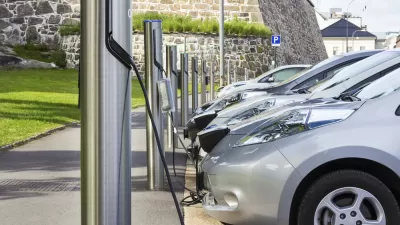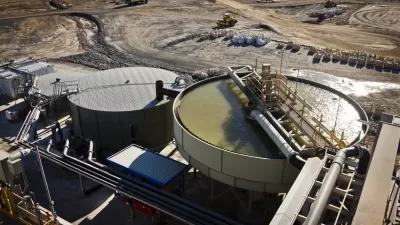Imperial County, a quiet agricultural region in the Southern California desert, could become the nation’s leading lithium source.

California’s Imperial County, known for the infamously polluted Salton Sea, quirky artist communities, and vast agricultural communities, is suddenly in the national spotlight after a study revealed the region could hold vast reserves of lithium, reports Ariana Bindman in SF Gate. “Imperial County — which now touts itself as Lithium Valley — is sitting on an estimated 3,400 kilotons of lithium, according to the 2023 study authored by Lawrence Berkeley National Laboratory.”
With new federal rules soon to ban the importation of key electric vehicle materials like lithium from China, the news could position the region as a crucial part of the U.S. supply chain.
According to the Berkeley Lab report, the region’s lithium reserves could produce over $7 billion worth of lithium per year, but extraction, which requires significant amounts of water, could be a challenge to the already water-strapped region.
“There’s been little research showing how these lithium mining operations could damage the Imperial County region’s water, air and indigenous cultural sites, according to a 2023 report from Earthworks, an environmental advocacy group.” Meanwhile, local Native American communities have expressed concern about the impact on cultural resources.
Lithium projects could bring an economic boost to the region, which suffers high rates of poverty. “According to a March press release from the county, lithium extraction will be taxed, and 80% of this new revenue stream is to go directly to the county. Senate Bill 125 mandated that the county spend at least 30% of the revenue on projects in local host communities.”
FULL STORY: A struggling California region is suddenly poised to become very, very rich

Maui's Vacation Rental Debate Turns Ugly
Verbal attacks, misinformation campaigns and fistfights plague a high-stakes debate to convert thousands of vacation rentals into long-term housing.

Planetizen Federal Action Tracker
A weekly monitor of how Trump’s orders and actions are impacting planners and planning in America.

In Urban Planning, AI Prompting Could be the New Design Thinking
Creativity has long been key to great urban design. What if we see AI as our new creative partner?

Pedestrian Deaths Drop, Remain Twice as High as in 2009
Fatalities declined by 4 percent in 2024, but the U.S. is still nowhere close to ‘Vision Zero.’

King County Supportive Housing Program Offers Hope for Unhoused Residents
The county is taking a ‘Housing First’ approach that prioritizes getting people into housing, then offering wraparound supportive services.

Researchers Use AI to Get Clearer Picture of US Housing
Analysts are using artificial intelligence to supercharge their research by allowing them to comb through data faster. Though these AI tools can be error prone, they save time and housing researchers are optimistic about the future.
Urban Design for Planners 1: Software Tools
This six-course series explores essential urban design concepts using open source software and equips planners with the tools they need to participate fully in the urban design process.
Planning for Universal Design
Learn the tools for implementing Universal Design in planning regulations.
planning NEXT
Appalachian Highlands Housing Partners
Mpact (founded as Rail~Volution)
City of Camden Redevelopment Agency
City of Astoria
City of Portland
City of Laramie




























